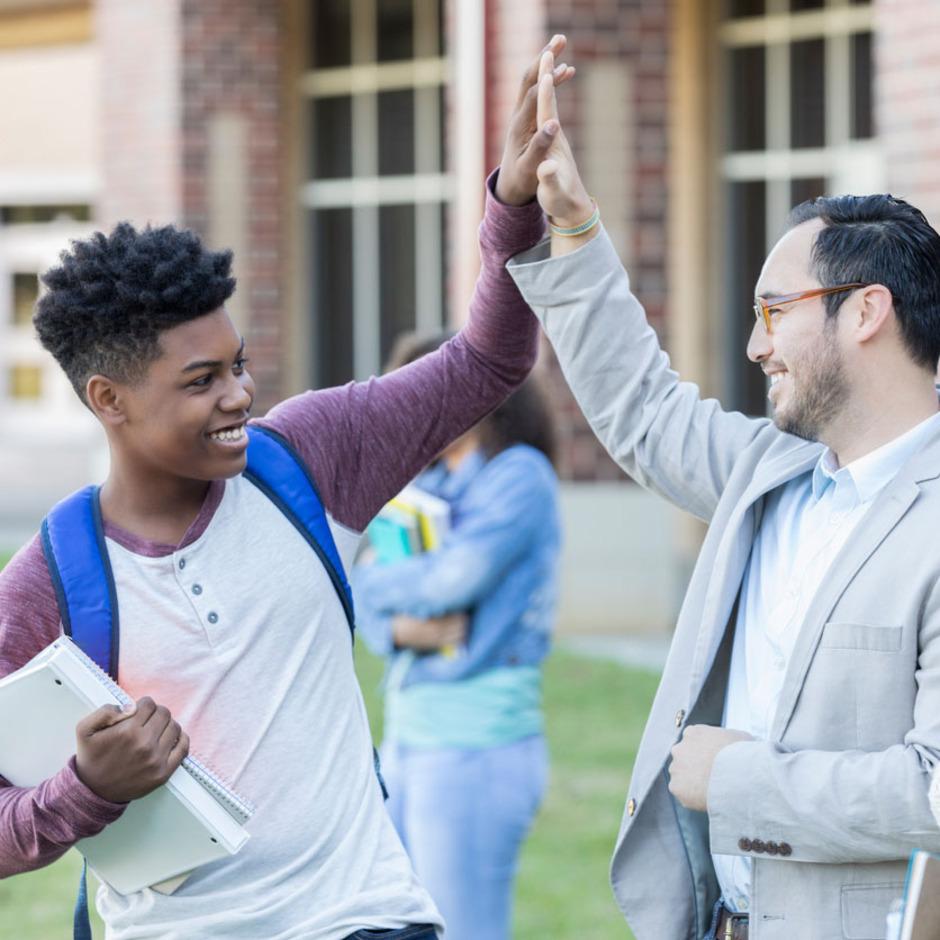Supporting Students
Read about how forming an academic advisory allows schools to make sure they are reaching all students.
Supporting Every Student: Let’s Make it Personal
By Cena Davis and Diane James, SREB
 Educators and researchers agree that
when students have a trusting and supportive relationship with at
least one adult at school, they are more likely to succeed
academically and emotionally. That’s why having a strong advisory
program is key to a successful high school or middle grades
school experience.
Educators and researchers agree that
when students have a trusting and supportive relationship with at
least one adult at school, they are more likely to succeed
academically and emotionally. That’s why having a strong advisory
program is key to a successful high school or middle grades
school experience.
Advisory programs consist of a small group of students meeting regularly with a teacher or other adult in the school building during a dedicated class period. To be most effective, the same group of students remain with that adult throughout all four years of high school or three years of middle school, maintains Carol Clemmons, school improvement coach with the Alabama State Department of Education, Office of School Improvement.
An advisory period is not a “free” or homeroom period, but it is less academic than a traditional class. It may cover the soft skills or social skills that students need while also providing students with a sense of belonging.
Clemmons, who is also a former high school principal and response to intervention specialist, advocates for a personalized approach to advisory: “I feel like we lose that personal touch with our students the older they get,” she said. She reflects that kindergarten teachers know their students’ moms and dads or guardians, and it should be that way in middle and high school. But at the secondary level, students can get lost in the shuffle.
Clemmons shares a roadmap for the who, what, when, how and why of a successful advisory program.
Who Benefits
Students benefit most when they are part of an advisory period because they form relationships with an adult who advocates for them and connect with their peers. Clemmons indicates the group should be small and diverse — comprised of 15 to 20 students per class, including students of different races and ethnicities, honors and struggling students, and athletes, for example. Students who may not have strong connections anywhere else in the school can find a place in their advisory group. “It’s kind of their home base,” said Clemmons.
What an Advisory Model Looks Like
 Ideally, every adult in the
building — teachers, administrators, media specialists and
athletic coaches — would have an advisory class comprised of the
same group of students throughout high school, who they meet with
daily. Lessons are developed by teachers and tailored to fit the
school.
Ideally, every adult in the
building — teachers, administrators, media specialists and
athletic coaches — would have an advisory class comprised of the
same group of students throughout high school, who they meet with
daily. Lessons are developed by teachers and tailored to fit the
school.
“You can’t bring them in, sit them in rows and teach them,” said Clemmons. Advisers must establish a personal relationship with students — spend time with them, learn their interests and know their learning styles because “you can’t teach me if you don’t know me,” notes Clemmons.
When to Plan Advisory Program
According to Clemmons, a successful advisory program requires upfront planning. She recommends that volunteer grade-level and lead teachers meet over the summer to develop a calendar and lessons. The curriculum may include topics like organizational or personal interaction skills, study skills and academic support, or college and career preparation. Once the curriculum is in place, all advisers must be trained in the process and ready to implement it on day one of school.
Clemmons cautions that teachers must have time or money to take on this lead role and not have it be just another thing added to their plates. To facilitate this, some schools give stipends and schedule an advisory work period into teachers’ schedules. For example, instead of before- or after-school duty, teachers have an advisory period.
How to Structure Advisory
There’s no one-size-fits-all approach to an advisory program. Educators must tailor their programs to meet the specific needs of their students. Clemmons’ model emphasizes a personalized approach in which teachers advise the same students all four years, have daily interactions through an advisory group and time to get to know not only the students but their families, too.
She suggests that advisers make their first positive connection with their students’ families in the first month of school. For parents, “That makes an impact immediately to know there is somebody in the school that I can call,” said Clemmons. Dynamic advisory activities can be added, such as individual student conferences with families and special graduation recognitions with advisers.
Know Your Why
The sense of belonging that students get from developing a positive relationship with a trusted adult is immeasurable. Research shows it increases student motivation, engagement and academic success.
Having one class period every day with the same group of students over four years also fosters close bonds and friendships with peers.
Tangible Results
 Clemmons notes in large and small
diverse schools in which she has worked, 98% of parents attend
school conferences when they know their child’s adviser will be
with them. Plus, parent surveys about advisers are
enthusiastically positive.
Clemmons notes in large and small
diverse schools in which she has worked, 98% of parents attend
school conferences when they know their child’s adviser will be
with them. Plus, parent surveys about advisers are
enthusiastically positive.
Another important data point: Clemmons cites a large high school that had a ninth-grade retention rate of 12%, which declined to 2% after implementing a strong advisory program.
“Kids won’t slip by because we have our eyes on them and hearts with them every day,” said Clemmons.
Contact: Carol Clemmons, ccclemmons1@gmail.com

